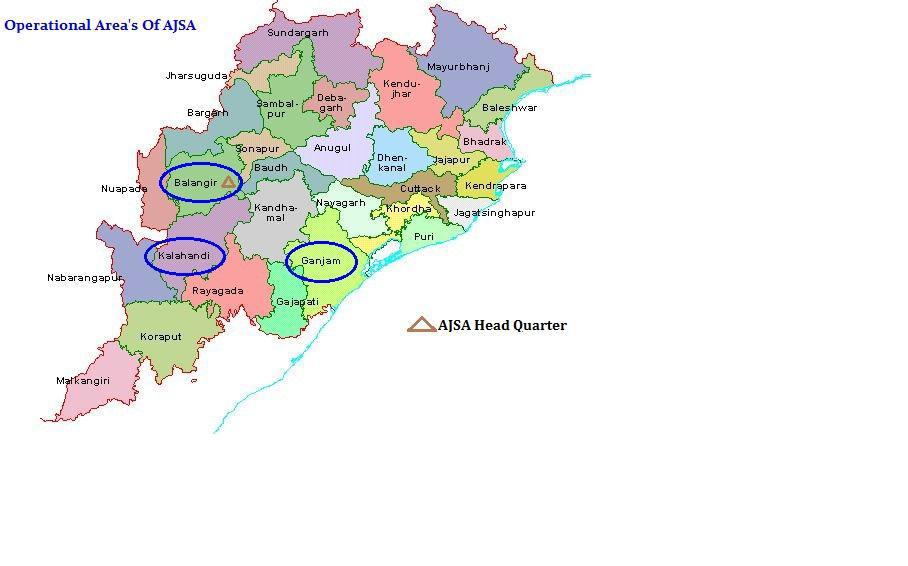Eastern Hills
Springs are more than just a source of water for humans
Posted on 02 Dec, 2015 09:04 PM"If you do good work on the ground, policy will happen", says Himanshu Kulkarni of ACWADAM. This has proven to be in true at least in the case of springs.

New CGWA guidelines mandate NOC for industries to extract groundwater
Posted on 24 Nov, 2015 05:45 PMIndustries can extract groundwater only after obtaining a NOC: CGWA

Taking advantage of the simple concept of gravity
Posted on 31 Mar, 2015 11:46 AMVanajakshi, a 21 year old girl from Gondipakalu in Chintapalle Mandal, Andhra Pradesh, recalls that, growing up, she was often late to school. It wasn’t because she was having trouble waking up. It was because she had to accompany her mother to fetch water, and that took up around 2.5 hours every morning.
Vanajakshi's reason wasn’t unique to her.

Call for Abstracts for the seminar on 'Impacts of Mining on Ecological Sustainability in Eastern Ghats’, Samata, India
Posted on 25 Feb, 2014 03:30 PMAbout Samata:
42 water bodies restored in Berhampur, Odisha through community mapping
Posted on 21 Feb, 2013 11:26 PMAuthor: Dr. Piyush Ranjan Rout
In an urbanisation dominated world, the restoration water bodies in Berhampur town may remain unknown to many, but it is igniting many around the region to take care of water bodies in their respective cities & towns. The story below will let you know how water bodies were restored in Berhampur, Odisha.
Enhancing livelihoods through diversion-based irrigation (DBI) in Odisha: An AJSA initiative
Posted on 14 Feb, 2013 10:58 PMCourtesy: Anchalika Jana Seva Anusthan (AJSA), Odisha

A map showing AJSA's area of operation in Odisha
To combat water scarcity and socio-economic deprivation through the effective use of water resources in Dudkarenga and Barbandha villages in Odisha, AJSA launched a Diversion Based Irrigation(DBI) initiative in kalahandi District of Odisha,to bring sustainable livelihood and address food security and climate justice in M.Rampur block of Kalahandi.
Now the DBI systems are providing irrigation to the earlier unirrigated area’s and has become the main source of livelihood to generation of people who have had land. It is also providing wage employment to the landless also.
Videos: Lovraj Kumar panel discussion focuses on the challenges to biodiversity conservation, livelihoods and ecological sustainability
Posted on 26 Jan, 2013 04:14 PMGuest post: Amita Bhaduri
Neoliberalism and the nature of the Polavaram beast - How the project will affect the Koya settlements in the Eastern Ghats
Posted on 21 Jan, 2013 11:51 AMFascism of the beginning of the twenty first century is the articulation and translation of racism and ethnicity into politics. Political developments in the nineteen nineties and the first years of the twenty first century demonstrate the determination to control the peripheries and the 'third world'.
Thirupporur and Vadakkuppattu: Eighteenth century locality accounts – A report by Centre for Policy Studies
Posted on 10 Oct, 2011 08:26 PMThis research monograph on Thirupporur and Vadakkuppatu: Eighteenth Century Locality Accounts, prepared jointly by the Centre for Policy Studies, Chennai and Tamil University, Thanjavur, presents a graphic picture of the society and polity of eighteenth century Tamil Nadu.
Gravity based spring water supply systems in Vishakhapatnam: A sustainable solution to an age-old problem
Posted on 23 Jun, 2011 05:42 PM With an annual rainfall of more than 1200 mm, this region has truly pristine and under-developed ground water resources. The water related issues are more complex in the hilly areas. Some of the most concerning issues that affect the current water scenario in the Eastern Ghats are pollution of water sources (springs & streams) leading to poor health, illiteracy and ignorance resulting in improper hygiene and sanitation practices. The burden on women and children is also high since they have to walk a long distance to the springs/streams for fetching water.